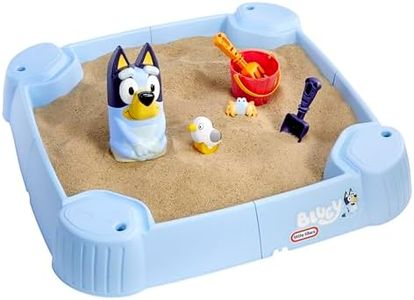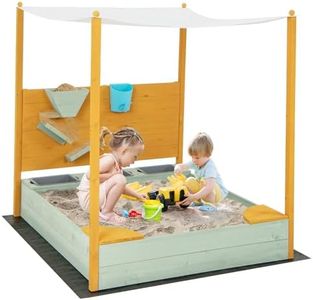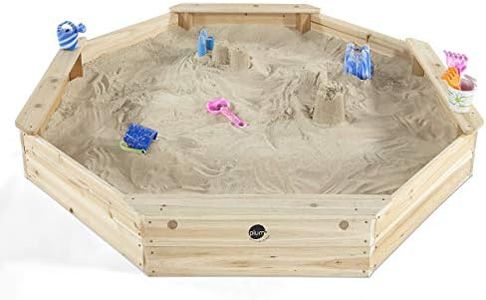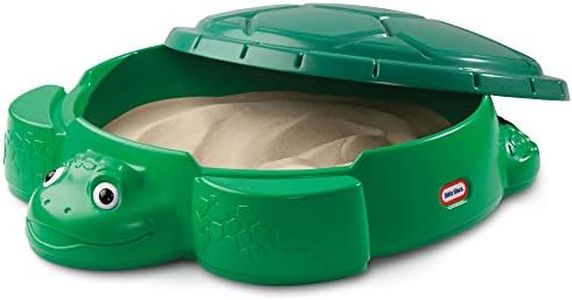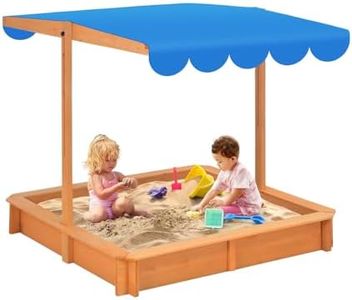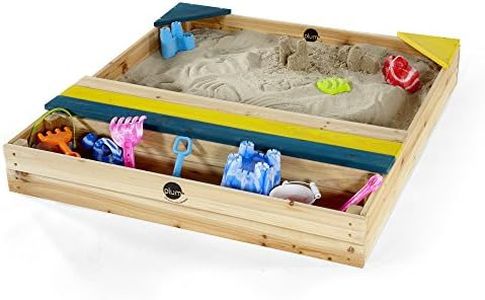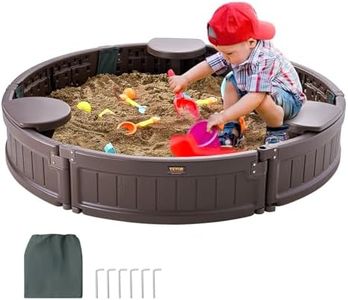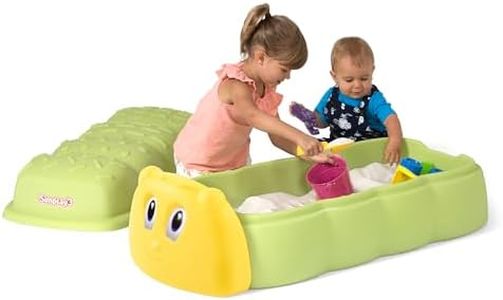We Use CookiesWe use cookies to enhance the security, performance,
functionality and for analytical and promotional activities. By continuing to browse this site you
are agreeing to our privacy policy
10 Best Sandboxes With Lids
From leading brands and best sellers available on the web.Buying Guide for the Best Sandboxes With Lids
When deciding on a sandbox with a lid for children, it's important to balance safety, durability, practicality, and fun. The right sandbox can provide hours of imaginative play and outdoor activity. The lid is crucial for keeping out rain, animals, and debris when not in use. To ensure you select the best fit, start by thinking about the number of children who will use it, your available outdoor space, and the age range of the kids. Review the key specifications below to guide your choices and find a sandbox that will be a lasting favorite.Size and CapacitySize refers to the overall dimensions of the sandbox, while capacity often involves how much sand it can hold. This is important because it determines how many children can play together and whether your available space can comfortably fit the sandbox. Sizes typically range from compact options for one or two children, to larger models that fit groups. Smaller sandboxes are best for tight spaces or single-child use, while larger sandboxes work well for families with several children or for hosting playdates. Consider who will be using the sandbox and your yard size to choose the right balance.
MaterialSandboxes with lids are usually made from plastic, wood, or occasionally other durable materials. Material choice impacts the sandbox’s weight, durability, maintenance, and appearance. Plastic is lightweight, weather-resistant, and often has smoother edges for safety, making it suitable for younger children. Wood usually looks more natural in the yard and is sturdier, but requires periodic maintenance to prevent splintering and weather damage. Pick the material that matches your climate, how often you want to maintain it, and the look you want in your yard.
Lid Design and SecurityThe lid’s job is to keep out animals, leaves, and moisture, so its design and how it fastens are crucial. Some lids snap on or are hinged, while others simply rest on top. Hinged or locking lids offer better security but can be heavier. Resting lids are easier for kids to manage but may blow off in strong wind. Think about who will be opening and closing the lid—if it’s mainly kids, choose a lighter or easier to manage option. If pests or weather are big concerns where you live, prioritize a more secure lid.
DrainageDrainage refers to features that allow water to escape so the sand doesn’t stay soggy after rain. This is important to prevent mold and keep the sand comfortable for play. Some sandboxes are built with drainage holes or gaps at the bottom. When considering drainage, check if the design helps water drain out and whether you’ll need to drill extra holes if rain is frequent in your area. For areas with lots of rain, good drainage can help keep maintenance low and play more enjoyable.
Ease of Assembly and PortabilityEase of assembly is about how simple it is to put the sandbox together, while portability is about how easily it can be moved. These matter because you might want to change locations or store it away in the off-season. Most plastic options are quick to assemble and easy to move, while wooden sandboxes might need tools and extra steps. If you want flexibility or need to bring the sandbox indoors for winter, consider lighter, more portable designs. If it will stay in the same spot, sturdier options work well even if they're harder to move.
Additional FeaturesSome sandboxes come with built-in seats, shaded canopies, or extras like storage for toys. These features can add comfort and convenience. Built-in seating is great for kids and adults to rest, while a canopy can provide sun protection during hot days. Storage compartments help keep sand toys organized. Think about how these features match your family's needs—if you often play outside in sunny weather, a canopy is useful; if you want to avoid clutter, storage can be helpful.
